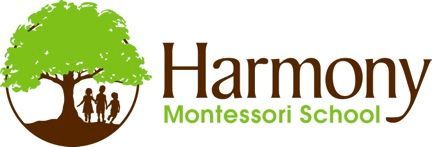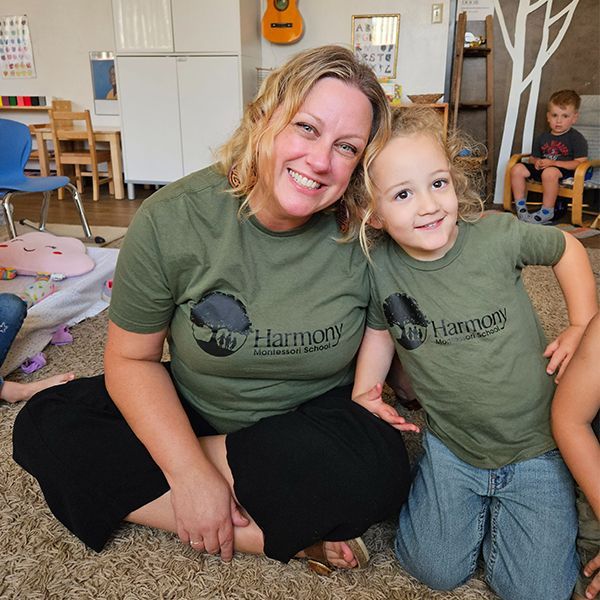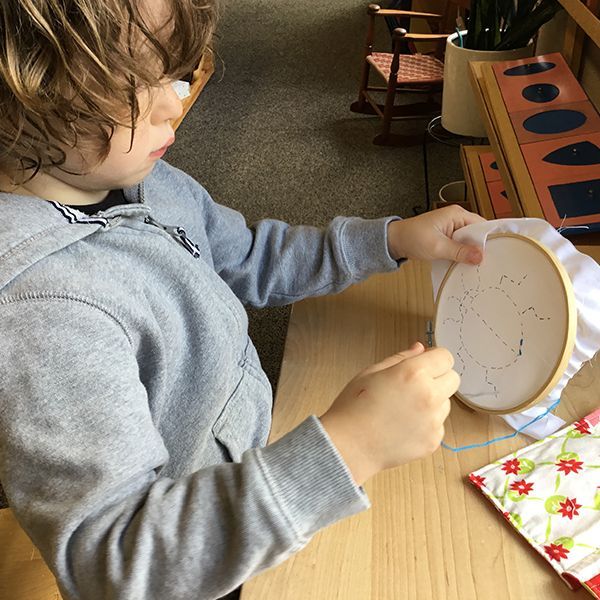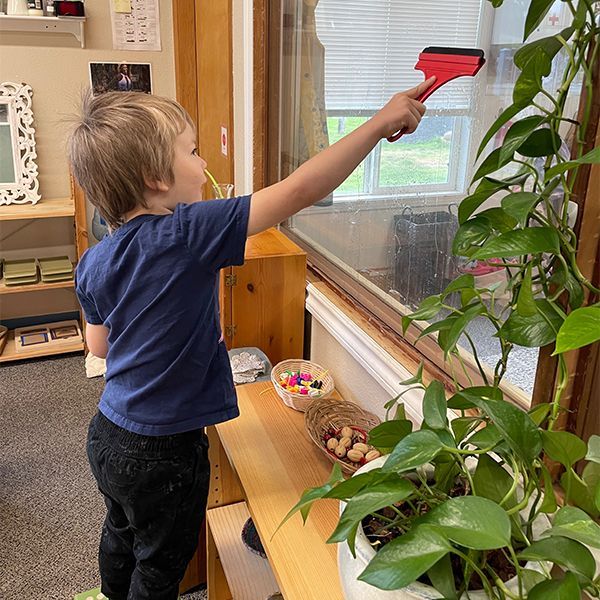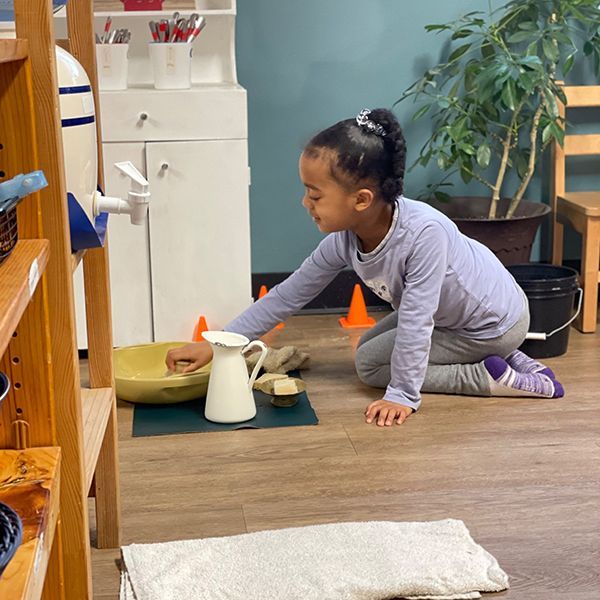Primary
2.5 – 6 years
The Primary program is truly a gift to your child. Designed for children between the ages of 2.5 - 6 years, it is an opportunity to nurture his individual development within the context of a group setting. The result? Self-confidence, joy and a lifelong love-for-learning.
It’s a Mixed Age Classroom
Because the curriculum is individualized, your child can work at his or her own pace while participating in a mixed age classroom community. Your younger child learns by observing the behavior and activities of the older children. Your older child gains self-confidence, leadership skills and responsibility by setting an example for her younger friends.
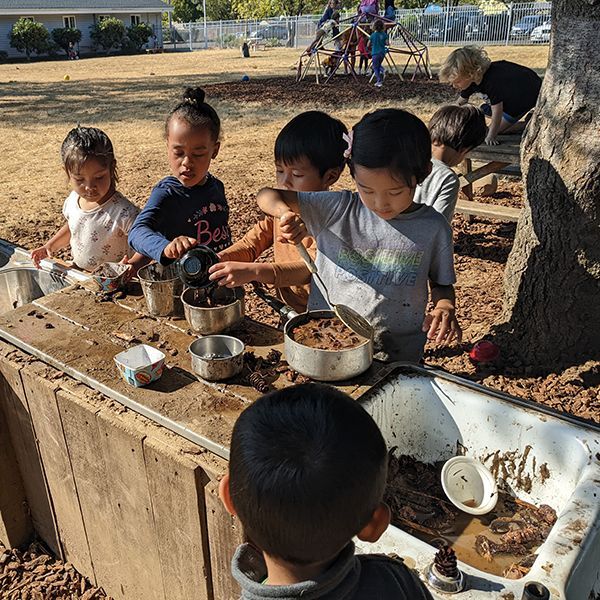
The Gift of Choice
Your child will be introduced to a broad range of concepts and activities in individual and small group lessons. The real learning, however, occurs through independent activity by choosing to explore it, repeat it and perfect it.
A Deep Connection Between Teacher and Child
Our AMI certified teachers choose this career because of their love for children and dedication to Montessori. Their depth of training and knowledge is amplified by the joyful and deep relationship they develop with your child throughout the three-year journey together.
Child Centered (Not Teacher Centered)
Unlike conventional classrooms, where all children are expected to pay close attention to the teacher, our program does the opposite – the teacher is trained to closely observe your child’s interests, tendencies and needs. You won’t see the teacher standing at the front of the classroom at a chalkboard, but rather down at your child’s level, engaged with her or a small group.
Beautiful Hands-On Materials Help Your Child Learn
The scientifically designed Montessori materials help your child learn through hands-on use and exploration. Through continued use, he develops as a concrete understanding of abstract concepts, such as mathematics, providing a solid foundation for learning into the future.
Group Activities and Play
While most of the day is spent in self-directed work, there are also times for group activity and play. The teacher may gather a group for songs or to tell stories about a cultural, scientific or historical theme of interest. Ample time is also given to run, dig, explore and play with friends outdoors.
One Size Does Not Fit All
Instead of a top down curriculum based upon age, the teacher is trained to respect your child’s unique potential and connects him with the lesson best suited at that precise moment of development. Your child will be challenged according to her ability, not to a generic standard.
The Children’s House
The teacher works to perfect the environment – in it, your child works to perfect him or herself. Our teachers put tremendous care and attention to detail into the classroom with low shelves, beautiful artwork, books and cultural items of interest to pique your child’s interest and stimulate his senses. The children respond by developing a sense of classroom ownership and a drive to care for it, further deepening the bonds of the community and their quest to learn.
Kindergarten Included
Montessori is a continuum of education that allows your child to build upon experiences each year. Your child will stay in the Primary classroom for 3 years, including the traditional “kindergarten year” – when the seeds of learning come to fruition. Reading and writing come to life from sounds and symbols. She is introduced to numbers and the decimal system. She learns about geometric figures and the political countries of our world. She leaves the program with a strong set of academic skills; but, far more importantly, with the attitude that learning is fun, exciting and boundless.
